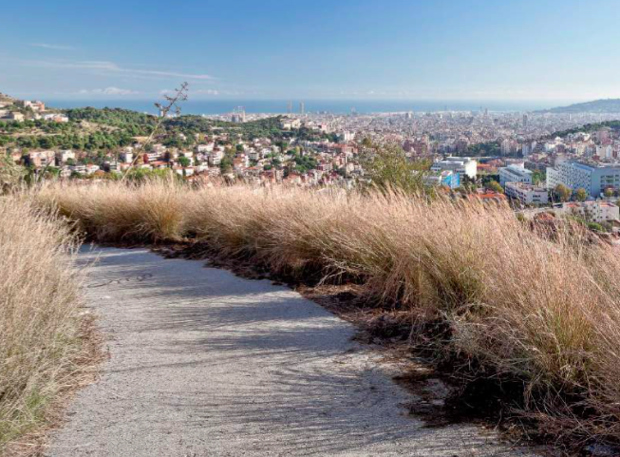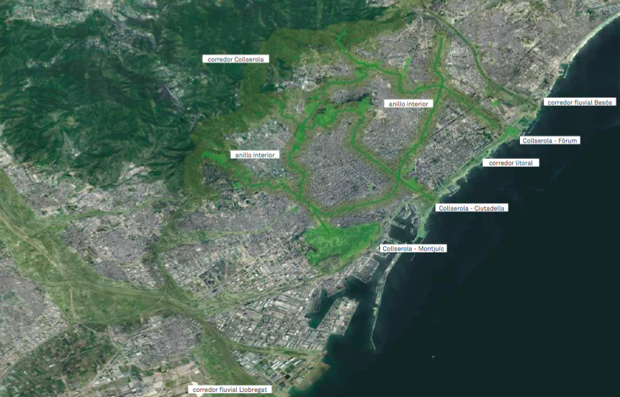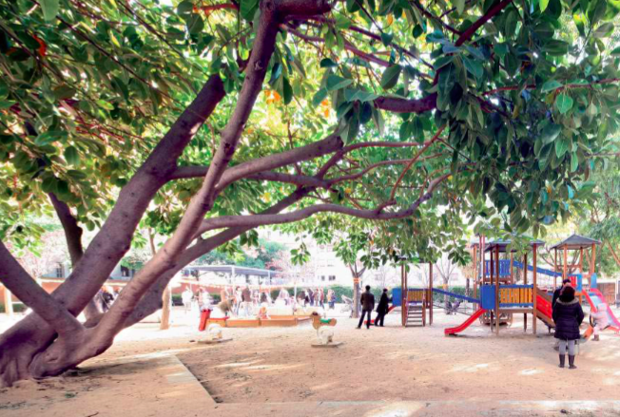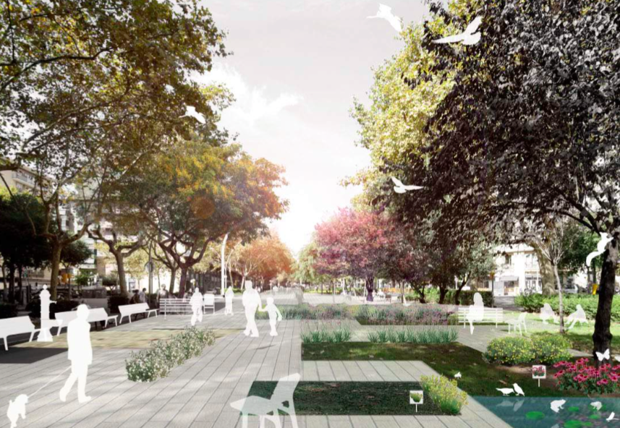
The city is planning a major green makeover to combat the heat island and create a more welcoming place for humans and animals alike.
It’s an issue that many older, denser cities are facing as they try to make themselves more amenable to their citizens and the environment. For Barcelona, this challenge requires especial ingenuity. Take a walk around what is one of Europe’s most densely populated city cores and you’d be forgiven for pronouncing the place full.
With an intense knot of historic masonry at its heart, Spain’s second city doesn’t display the most obvious potential as a future green paradise. But it badly needs new green spaces to battle its heat island effect, manage air and noise pollution, and generally improve citizens’ quality of life.
That’s why, on Monday, the city nonetheless rolled out a paradigm-shifting re-greening program, one that will double the number of trees in the city, increase park space by two thirds, and give each citizen an extra square meter of green areas. The urban plan, which will deliver 108 acres of new green space by 2019 and over 400 acres by 2030 is a model of ingenuity that could serve as a model for other cities.
In its core, Barcelona is built up more or less to the last square inch, with a network of historic streets and alleys supporting a population density greater than Manhattan’s. This area’s sea of buildings is sometimes softened with avenues of trees, small gardens, and one modest but beautiful park—but it can still feel heavy-aired and claustrophobic on Barcelona’s many hot days.

This imbalance may partly contribute to major differences in temperature between the city’s center and its periphery. Temperatures are typically up to 7 degrees Celsius (11 degrees Fahrenheit) higher in the old town than in the city’s greener, higher suburbs. Cities on the Iberian peninsula have always adapted carefully to intense summer heat. Streets stay narrow to provide shade, while south-facing windows often stay covered with awnings and shutters in the hotter months to keep interiors cool without automatic resort to air conditioning. Still, in a city where summer highs already regularly reach above 90 degrees Fahrenheit, climate change will see Barcelona only get warmer, drier and potentially more uncomfortable. Plans to green the city are thus not merely about creating a more pleasant-looking urban environment—they’re an essential step toward ensuring that inner Barcelona stays liveable in summer.

The five new gardens, many of which are already under construction, are a lesson in finding space where there doesn’t appear to be any. The largest one will spring up around a major city square; the land used to belong to road traffic, but those cars are now being diverted into nearby tunnels. A small park was already created at Plaça de les Glòries Catalanes, and by burying elevated roads that currently criss-cross the space, the city has found a way to greatly extend it and make the resulting oasis much calmer.
Another green space will be made—controversially—by clearing away a large courtyard block in the city center that is currently partially filled by squatted, single-story 1920s workshops. A third public space will be created by opening the lush, mature 7.5-acre garden of a newly created house museum to the public. A fourth parkwill be opened on what is currently a small, scrappy piece of ex-industrial semi wasteland in the hinterlands behind the city’s main container port, and a fifth will be created as part of a long-stalled but newly revived redevelopment of an outlying barracks.

Arguably the biggest change isn’t from the parks, but from the policies designed to connect green spaces into one leafy network. Ten large interior courtyards in Barcelona’s Eixample district will be planted with trees, while 10 city squares will get parking restrictions that allow for more plantable area. New or enlarged avenues of trees will thread this network together along major streets with surfaces that are more permeable to rain, so that birds and insects can spread across a seamless habitat.

Back in town, the city is also stumping up a lot of cash to promote green roofs. The city has just called for applications for 50 bursaries of €1,500 to create greening plans for roofs across the city. The top 10 of these submissions will be eligible for grants of up to €100,000 per roof, while elsewhere the city will get new bird and bat boxes, rooftop hives, and insect hotels. Creeper will also be planted and trained across bare walls.
Taken individually, all these microprojects are tiny drops in the bucket. Together they will work to form a flood, creating a future Barcelona that is greener, fresher, more sustainable, and more humane.
